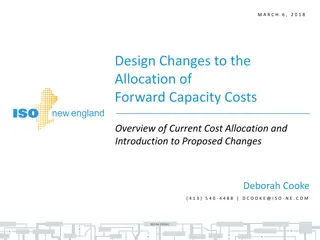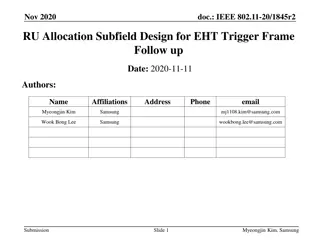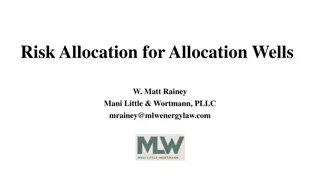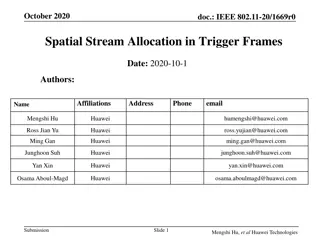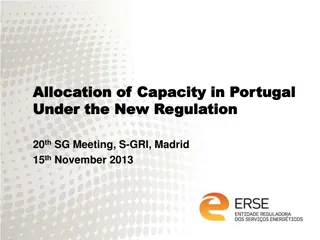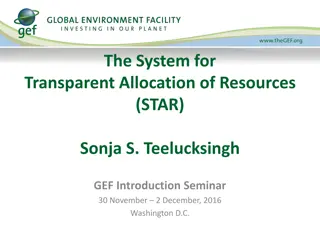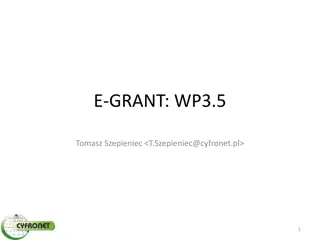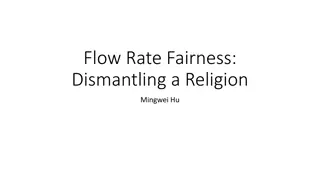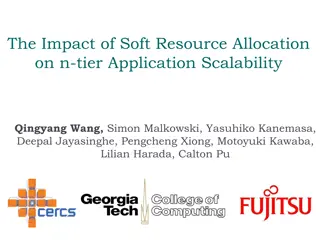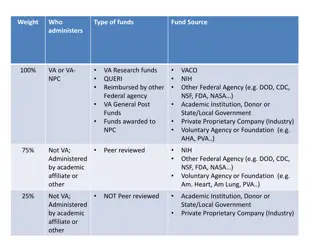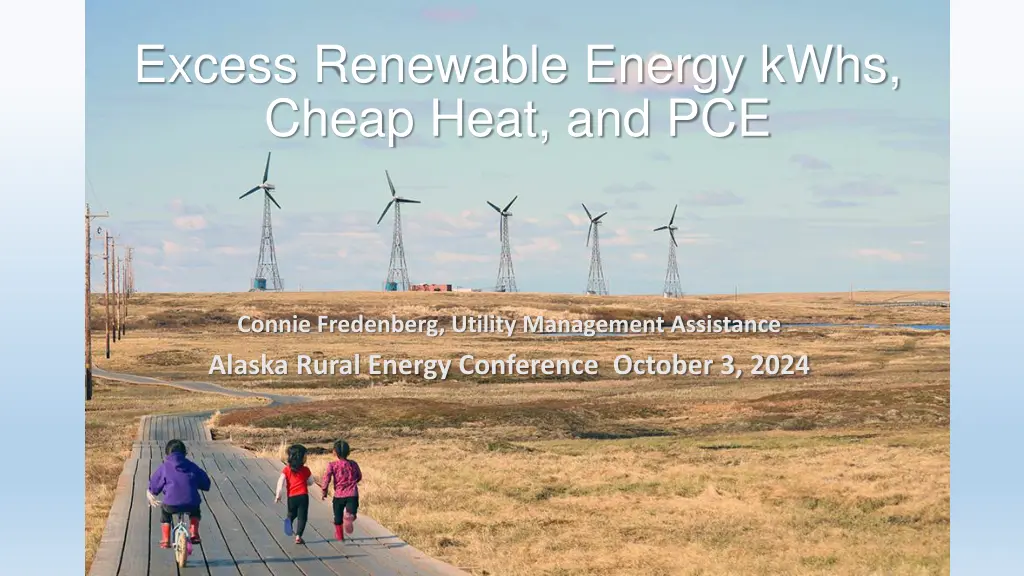
Excess Renewable Energy and Cheap Heat Impact on PCE Rates
Explore the challenges faced by utilities in Alaska regarding the inclusion of excess renewable energy and cheap heat in PCE calculations. Learn how the sale of excess hydropower kWhs and recovered heat affects PCE rates, and the ongoing disputes with RCA regarding cost allocations. Discover the complexities of balancing energy conservation measures with revenue considerations in the context of sustainable energy practices in rural Alaska.
Download Presentation

Please find below an Image/Link to download the presentation.
The content on the website is provided AS IS for your information and personal use only. It may not be sold, licensed, or shared on other websites without obtaining consent from the author. If you encounter any issues during the download, it is possible that the publisher has removed the file from their server.
You are allowed to download the files provided on this website for personal or commercial use, subject to the condition that they are used lawfully. All files are the property of their respective owners.
The content on the website is provided AS IS for your information and personal use only. It may not be sold, licensed, or shared on other websites without obtaining consent from the author.
E N D
Presentation Transcript
Excess Renewable Energy kWhs, Cheap Heat, and PCE Connie Fredenberg, Utility Management Assistance Alaska Rural Energy Conference October 3, 2024
AS 42.45.130 provides in relevant part: (a) Each eligible electric utility shall cooperate with appropriate state agencies to implement cost-effective energy conservation measures and to plan for and implement feasible alternatives to diesel generation. and other insulating methods, utilization of waste heat, appropriate sizing of new generating equipment, and other programs of the state or federal government intended and available for energy conservation. (b) In this section, energy conservation measures include weatherization The Heat Conundrum If a utility sells heat/BTUs from recovered diesel jacket water the resulting revenue must be included on the annual report to the RCA. The RCA will subtract this revenue from the utility s non-fuel expenses, concluding that the heat is not necessary for the generation and sale of electricity . This can decrease the utility s PCE rate. If a utility sells excess renewable kWhs even for $0.10/kWh or less - the resulting revenue will be subtracted from the non-fuel expenses AND the kWhs will be counted as kWhs sold both of which decrease the utility s PCE subsidy rate.
INNs CHALLENGE In September 2000 the RCA issued Letter Order U-00-105-2 in response to INN s objection to having their excess hydropower kWhs that are sold for $0.05/kWh heat included in their PCE calculation. In that Letter Order the RCA concurred that INN has a unique system that allows for the production of excess power merely by opening a valve and allowing extra water to pass through their generators. The Commissioners stressed the value of the cheap heat to customers: We find that projects that reduce the use of heating oil in rural areas of Alaska are beneficial to all. including these sales in the PCE calculations produces an understated cost per kWh and an unwarranted reduction in PCE levels.
AVECs CHALLENGE In July 2016 AVEC submitted a letter to the RCA requesting reconsideration of their most recent PCE calculations: AVEC has for years has been trying to convince the Commission to stop its unwritten practice of offsetting recovered heat and surplus renewable energy sales revenue against allowable costs, thereby reducing the PCE rate for customers. AVEC again voiced its objection to Staff s PCE calculations in this matter. Despite AVEC s repeated pleas, the Commission has never adequately explained its reasoning in writing for removing recovered heat sales revenue for the purpose of calculating PCE allowable costs. on one hand the Alaska Legislature requires participating electric utilities to engage in the utilization of waste heat recovery for energy conservation purposes and to implement feasible alternatives to diesel generation, while on the other hand, the Commission is penalizing AVEC s customers for AVEC s compliance with the law in displacing diesel fuel through utilization of recovered waste heat. The Commission s resulting counterintuitive logic reduces the PCE rate in Bethel by more than two cents per kWh and penalizes the community by more than an $170,000 reduction in PCE levels for FY2017.
KONGIGANAKS CHALLENGE In 2021 I helped Puvurnaq Power Company/PPC with their Annual Report. Their wind farm produced 44% of their energy that year and displaced nearly 50% of the diesel used for power generation and heat. The corporation said most folks who bought less diesel for home heating bought more gasoline for hunting, so the corporation store was fine with selling less diesel fuel. We requested that the sale of PPC s excess wind kWhs, which were sold at $0.10/kWh for heat, should be treated just like INN s excess hydro kWhs. Our request was denied. Staff explained that INN has a unique system. I contended that PPC has a new kind of unique system that should be treated the same. They oversized their wind farm intentionally to make cheap heat from excess wind energy. PPC would have to curtail their wind turbines in order to not make the excess kWhs. The people of Kongiganak lost $0.03 on their PCE rate. Many rural utilities are now, or will soon, replicate PPC s system of oversizing the renewable energy installation in order to generate and use excess renewable kWhs for cheap heat. They, too, will face a loss of PCE.
EFFECTS ON RATES RELATIVE TO HOW THE RCA HANDLES HEAT SALES FROM EXCESS RENEWABLE ENERGY BASED ON PUVURNAQ POWER COMPANY 2021 Customer Rate $ 0.67 PCE Rate $ 0.3834 Effective Rate $0.2866 Cost of 750 kWhs $ 214.95 Traditional RCA Review Revenue from Heat Sales NOT Subtracted from Non-Fuel Costs $ 0.67 $ 0.3871 $0.2829 $ 212.18 Heat kWhs Subtracted from kWh Sales for PCE Rate Calculation $ 0.67 $ 0.4135 $0.2565 $ 192.38 Heat kWhs Subtracted AND Revenue from Heat Sales NOT subtracted from Non-Fuel Costs $ 0.67 $ 0.4173 $0.2527 $ 189.53 AVEC s challenges to use system efficiency vs. diesel efficiency for high penetration systems and to not deduct heat revenue from non-fuel costs have yet to succeed. INN alone receives the benefit of not including excess renewable kWhs sold for heat when calculating their PCE rate. This is NOT the way to encouragereplacing imported diesel fuel with local renewable energy.
FUEL EFFICIENCY VS. SYSTEM EFFICIENCY Another issue AVEC raised with the RCA is regarding fuel efficiency vs. system efficiency. When there is a high penetration of renewable energy diesel generators can run at the low end of their efficiency curve. When a higher efficiency is expected, based on diesel generation alone, the RCA will reduce the number of gallons of diesel used to equal the correct efficiency. Reducing the gallons of diesel used decreases the PCE rate. AVEC contends it should be system efficiency rather than diesel efficiency.
Questions? Connie Fredenberg Utility Management Assistance/UAF conniefredenberg@mtaonline.net 907-444-6220




